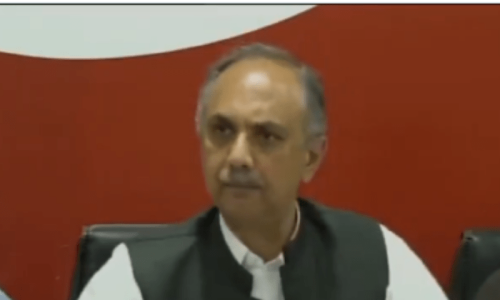‘INTERESTING’ times are upon Pak-US ties again. A US drone strike killed Mullah Mansour in Balochistan; the proposed US F-16 sale to Pakistan formally expired. The Obama administration failed to convince lawmakers on Capitol Hill to allow use of US public funds to complete the transaction and Pakistan refused to pay for them in toto; and the US Congress is moving to put further Haqqani network-related conditionalities on assistance to Pakistan.
Obvious commonality here: the US stance on Pakistan is hardening again. What’s up?
Perhaps the best way to explain this is to go back to my last article (‘Two Pakistans’, May 10) where I had addressed the Pakistani confusion about Washington’s seemingly contradictory messages on the F-16s.
I had explained that the US policy apparatus must simultaneously work with ‘two Pakistans’: the Pakistan that Washington perceives as insincere on the terrorism front, and whose policies are seen as a key reason for the insurgency in Afghanistan; and the Pakistan that is a nuclear power and whose stability is an imperative for global security. The Obama administration’s push to get the F-16 sale through was catering to ‘nuclear Pakistan’; it was to be a sign of continued commitment. The Hill’s decision was driven by ‘Afghanistan’s Pakistan’.
The Afghanistan debate will drive most decisions.
This is a generalisable principle: US choices based primarily on the Afghanistan aspect are often aimed at raising Pakistan’s costs for non-compliance while ones catering to the nuclear Pakistan tend to balance this out.
Things seemed to be improving in bilateral ties over the past 12-18 months because the global view on Afghanistan had shifted somewhat. Reconciliation with the Afghan Taliban was being formally prioritised and Pakistan was to play lynchpin in bringing them to the table. Signals to Pakistan were less pointed.
That phase is over. The reconciliation bid failed and Kabul is focused solely on the battlefield. The conversation has rebounded to the old: Pakistan must use force to eliminate Afghan Taliban sanctuaries on its soil. And since we are now at the back end of a failed effort to woo them and at the front end of a potentially nightmarish fighting season for Kabul, the perceived need to push Pakistan to act now is that much greater. The F-16s and Mansour’s killing should be seen in this perspective.
The Pakistani mind asks: what does this accomplish? Short answer: probably nothing. Then why do it?
First, because there is lingering hope in Washington that US assistance can be used as leverage to get policy change in Pakistan. US monies have provided its foreign policy immense leverage over the years; any number of countries have behaved desirably (from the US perspective) in return for assistance. This includes Pakistan: it was a major factor in keeping Pakistan in the Western camp throughout the Cold War.
Two, because Afghanistan is more important to the US than Pakistan thinks it is, or should be. The logic isn’t difficult. For Capitol Hill it is a no-brainer: US lawmakers approved a war and billions for it. The effort hasn’t gone according to plan and they must continue investigating. They have held many hearings on Afghanistan and have heard the word ‘Pakistan’ right up there in the list of reasons. Also, most US lawmakers have constituents directly and personally involved in or affected by the military deployment in Afghanistan. Americans have long wanted troops to come home but the situation doesn’t warrant it. Again, the frustration links back to the reasons for failure and Pakistan stands out.
On Pakistan, it ultimately boils down to a simplistic debate: is Pakistan the problem? Yes. Has US assistance changed their policy? No. Then why are taxpayers’ dollars being spent on a country that is supporting those who kill US soldiers in Afghanistan? Isn’t that tantamount to rewarding negative behaviour?
Considering only ‘Afghanistan’s Pakistan’, the logic holds. And it results in the vibes we are getting again: even if pulling back aid doesn’t help, continuing to provide it seems self-defeating. As custodians of the national purse, this logic matters to US lawmakers.
Of course, Pakistan has long argued that reality and facts are not that simple. But US decisions are informed by its, not Pakistan’s, view of things and on Afghanistan, Pakistan’s stock is negative.
US frustration with Pakistan is high enough that the Afghanistan debate will drive most decisions in the coming months, especially if the Taliban continue to ratchet up violence in Afghanistan.
To be sure, this doesn’t imply that a rupture is necessarily in the offing. The lessons from the 2011 breakdown of ties are fresh enough on both sides to want to avoid that. The US government, most of all, will keep reminding everyone of the constraints ‘nuclear Pakistan’ imposes on realistic policy choices. And yet, ‘interesting’ times lie ahead.
The writer is a foreign policy expert based in Washington, DC.
Published in Dawn, May 31st, 2016













































